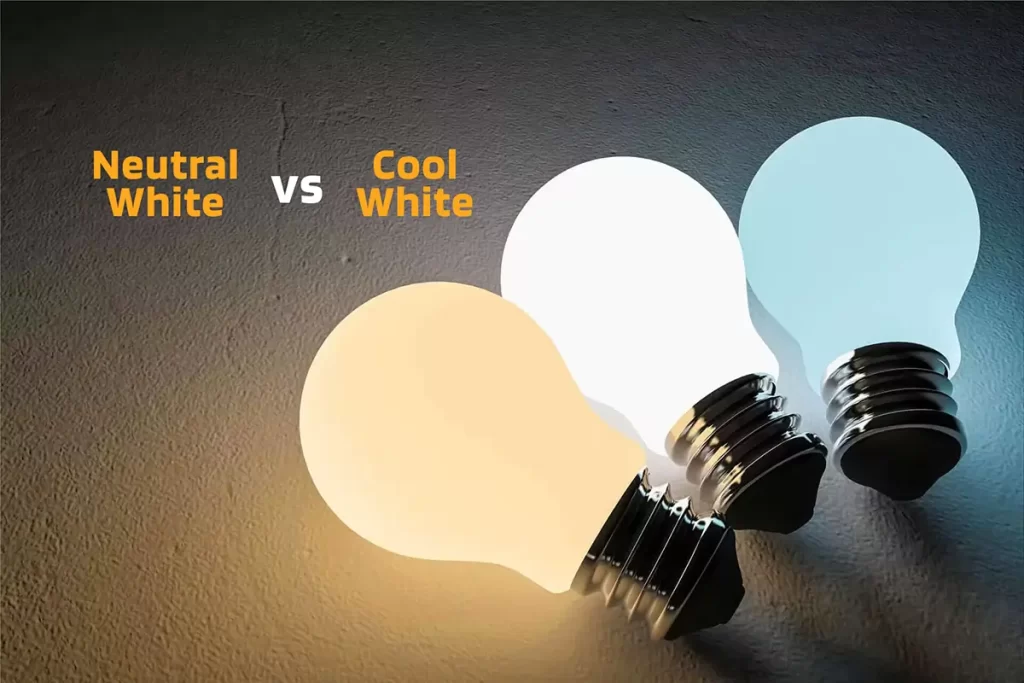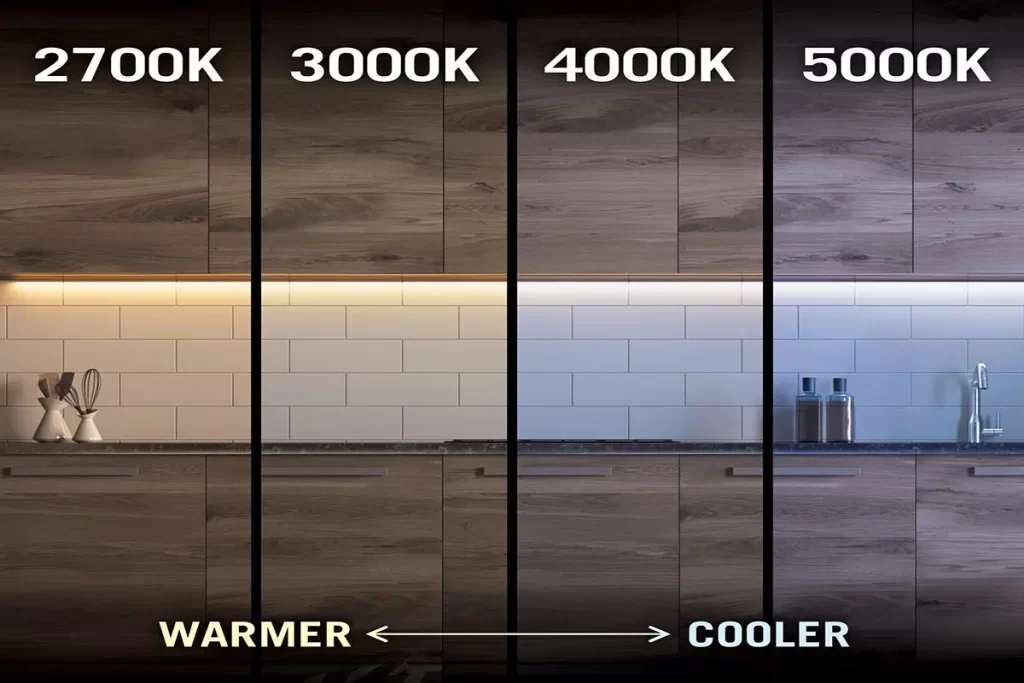
Neutral White vs Cool White is two very close color temperatures. Neutral White is found right in the middle of the space between warm and cool white LED light. Cool white light contains more blue light and looks brighter to the eye.
So what is Cool white? what is Neutral white? how to choose from Neutral White vs Cool White?
Cool White vs Neutral White – Main Difference?
Neutral white light is located right in the middle of warm white light and cool white light. It is approximately 4000K. A cool white colour temperature will provide more white light and an even ‘blue’ tint.
In fact, the neutral white is somewhat homogeneous and it acts mainly as a transition from warm white to cool white light.
Neutral White Color Temperature
- Mainly used in residential kitchens and dressing rooms.
- A transitional colour temperature between warm and cool colours
- Accentuates earth tones and cool colours equally well
- Mostly commercial lighting, supermarkets, and high-end hotels
Cool White Color Temperature
- It Accentuates cool tones and is on the blue side of high cool
- Generally used for commercial applications lighting, task lighting
- This colour temperature is recommended for white surfaces
- Not recommended for wood grain or earth tones
The Kelvin Scale Cool White vs Neutral White

Neutral whites are around 3500K-4500K left to mid, while cool whites start at around 5000K to 6000K. This is only an approximate colour temperature range, which also changes with manufacturers and lighting designers.
Finally, neutral white tends to have more yellow tones and cool white tends to have more white and blue tones.
How to Use the Right Color Rendering Index (CRI)?
Undoubtedly want a clearer representation of Cool White vs Neutral White? You have to pay attention to its CRI.
What exactly is CRI? The Colour Rendering Index (CRI for short), is a score of up to 100. It is a measure of how colours appear when compared to sunlight under a light source.
If the CRI value is high (above 90), you can visually see the difference in colour. The higher the CRI number, the more consistent and true the colour will be.
Where to Use Neutral White Color Temperature
The neutral white colour temperature is ideal for most home lighting. It is often more intimate as it lies between warm and cool whites. Warm white tones work well with earthy tones and wood textures.
Darker materials tend to absorb more light, so it helps to use stronger lighting in addition to colour temperature.
You can use neutral whites (3500K-4500K) in bedrooms, kitchens, bathrooms and indoor and outdoor spaces.

Where to Use Cool White Color Temperature
The cool white colour temperature has a large span in the Kelvin scale. It can range from 4500K to 6000K, so we often struggle with 4000K vs 5000K.
It is ideal for task-oriented spaces, ideal for offices, kitchens, laundry rooms, and garages.
In addition, the cool white colour makes people alert and more productive. It also exudes a more sterile, unwelcoming atmosphere, making it more suitable for commercial environments.
Conclusion
In fact, these differences in colour temperature are subtle. But they can still have an impact on your overall lighting design. Please bear in mind the following test results when you choose Cool White vs Neutral White.
- Neutral whites can have more of a ‘yellow’ tint
- Cool whites can have more of a ‘blue’ tint
- Neutral whites are approximately 3500-4500K
- Cool whites are approximately 4800-6000K
- Neutral white favors more residential applications or accent lighting (living rooms, bedrooms, wardrobes)
- Cool white favors more task lighting applications (kitchens, offices, bathrooms)
FAQs
Cool whites are between 4500k-6000k, while neutrals are 3800k-4000k. neutral whites and warm whites are generally more popular than cool whites.
The color temperature of lighting does have an effect on the eyes. Bright whites and cool bluish tones. If used a lot, they cause the most damage to the eyes.
Cool whites allow for better concentration and focus. Many people prefer to use cooler lighting in their home office, laundry room, and garage.
Cool or neutral whites look great in modern kitchens and the brighter they are the better you can see the food.
Cool white is the appropriate LED lighting for under-cabinet kitchens.
